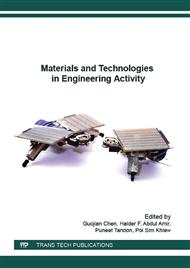p.68
p.73
p.78
p.82
p.89
p.94
p.99
p.107
p.112
Investigation on Mechanical Performance of Slender Cold-Formed Steel Channel Column
Abstract:
Cold-formed steel (CFS) is steel based material that has been used broadly in construction and building as non-structural or structural element. Many researchers are studying the CFS as structural element, such as column, beam and roof truss. With a lot of advantages, CFS becoming more popular when distinguished by other material. CFS also owned the unstable and unsafe circumstances when the section in a slender or long column. The main issue that influenced the unstable circumstances for slender column is recognised as local, distortional and global buckling. As a result, the study of the mechanical performance of slender column must be investigated to get some important information for design and analysis intention. Three samples of CFS channel column with a height of 1000, 1500 and 2000 mm are determined. From the testing, the ultimate load of the slender CFS column decreases with increasing of the height of the column. All columns are illustrated having the global buckling when subjected to load. The flange and web deformation of the column is becoming not stiff when the height of the column is increased.
Info:
Periodical:
Pages:
107-111
Citation:
Online since:
August 2016
Price:
Сopyright:
© 2016 Trans Tech Publications Ltd. All Rights Reserved
Share:
Citation:


